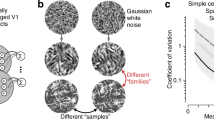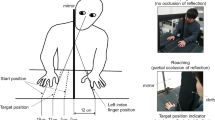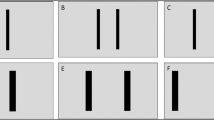Abstract
IN an attempt to clarify issues raised by changes associated with age in the ability of human subjects to perform perceptual-motor tasks, the rates of information transmission of younger and older subjects in performing discrete, choice reaction time tasks involving two different stimulus-response relationships were calculated. The tasks involved moving a stylus as quickly as possible from a central point to one of a number of targets arranged in a semi-circle in response to the appearance of one of a number of signal lights arranged in a similar semicircle. The first (direct) stimulus-response relationship required subjects to aim at targets corresponding directly in position to signals which appeared. In the second, indirect version of the task, the correct target was the ‘mirror image’ of that directly indicated by the signal.
This is a preview of subscription content, access via your institution
Access options
Subscribe to this journal
Receive 51 print issues and online access
$199.00 per year
only $3.90 per issue
Buy this article
- Purchase on SpringerLink
- Instant access to full article PDF
Prices may be subject to local taxes which are calculated during checkout
Similar content being viewed by others
References
Hick, W. E., Quart. J. Exp. Psychol., 4, 11 (1952).
Hyman, R., J. Exp. Psychol., 45, 188 (1953).
Crossman, E. R. F. W., Ministry of Supply Report WR(D)2/56, “The Application of Information Theory to Human Operator Problems” (1956).
Welford, A. T., “Ageing and Human Skill” (Oxford University Press, London, 1958).
Author information
Authors and Affiliations
Rights and permissions
About this article
Cite this article
GRIEW, S. Information Gain in Tasks involving Different Stimulus-Response Relationships. Nature 182, 1819 (1958). https://doi.org/10.1038/1821819a0
Issue date:
DOI: https://doi.org/10.1038/1821819a0



